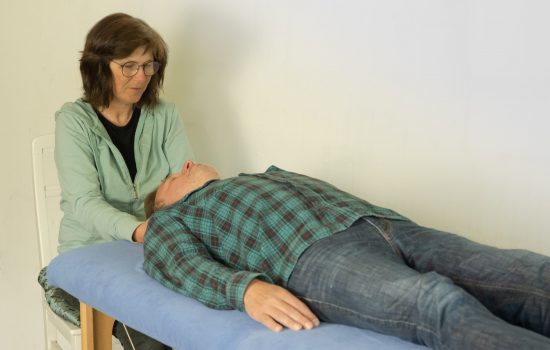
Development of PNE
Judith Johnson has invastigated many different methods in the last decades to find a methodology which is integrating different approaches of therapy to a holographic process that simultaneously engages the nervous system with its physical sensation, emotional feeling, mental perception, and opening to spiritual dimensions of experience. Psychiatrists and psychotherapists are working with emotions and beliefs, physiotherapists are working with the body – that are many split aspects in approaching. So in PNE many methodologies are weaved together to allow wholeness and create change in the human psyche.
Basics of pNE
We´ve got three phylogenetic possibilities to react on stress or trauma: fight, flight or freeze. The enormous energy needed for fight or flight is facilitateded by the autonomic nervous system. Only if the situation is too overwhelming and fight/flight is impossible, the third way is activated, the freeze state. All three reactions are inert survival strategies. Once we experience safety, our nervous system can release spontanously the survival energy f.e. through shaking or crying.
If this doesn´t happen continued autonomic dysregulation can result. It can lead to a cascade of toxic stress responses even many years after the initiating event. Symptoms like agitation, panic, depression, chronic fatigue and pain, the feeling of help- and hopelessness are common.
The vagus nerve plays a fundamental role within the regulation of our stress level and has a healing capacity on body and psyche when it is working well. The vagus nerve is the longest and most important nerve of the autonomic nervous system and controls the restorative function of homeostasis through many organs and glands, including digestion, immune function and calm heartrate. A high vagal tone (= activated and well working vagus nerve) induces a feeling of wellbeing and relaxation. Depression and anxiety goes along with a low vagal tonus and often a dysfuntcion of organs with symptoms like irritable bowl or heart arrythmia. There are many easy ways to activate the vagus nerv, which you can implement yourself (excersices to stimulate the vagus nerv). PNE-sessions can provide a deep impact on the regulation of the nervous system and can lead to a stronger vagal tone.
Extended pressure on neurosomatic points (in the picture above points on the neck) help accessing a part of the brain that holds old traumatic memories. This part of the brain, called limbic system, is the seat of our emotions, memories, reactive patterns, unconscious believes and modulates stress responses. Therefore these neurosomatic points are allowing a deep access to unconscious information and stimulate heightened functional processing and awareness. At the same time those points work deeply stabilizing in the process of discharging and reframing traumatic imprints.
Since “everything not redeemed” strives to salvation, body sensations arise naturally when the safe space is given. Gentle and careful awareness of body sensations and impulses leads to emotions and inner images. By establishing security, the energy frozen in the nervous system can gradually be released, often spontanously as freezing or trembling. The emotions that were so overwhelming at the time can be perceived in small, carefully dosed steps. Beliefs that have unconsciously determined our lives since then can be recognized as false and let go. What was not possible at the time, can be completed now.
When is PNE helpful
A dysbalance in the nervous system can show itself in various symptoms:
nervousness, tightness, anxiety disorders, panic, sleep disorder, nightmares
chronic fatigue, chronic pain, digestion disorder, burn-out, depression
But also internal states of feeling seperate, having problems to realte to loved ones or deep sadness will be understood to be able to change them.
